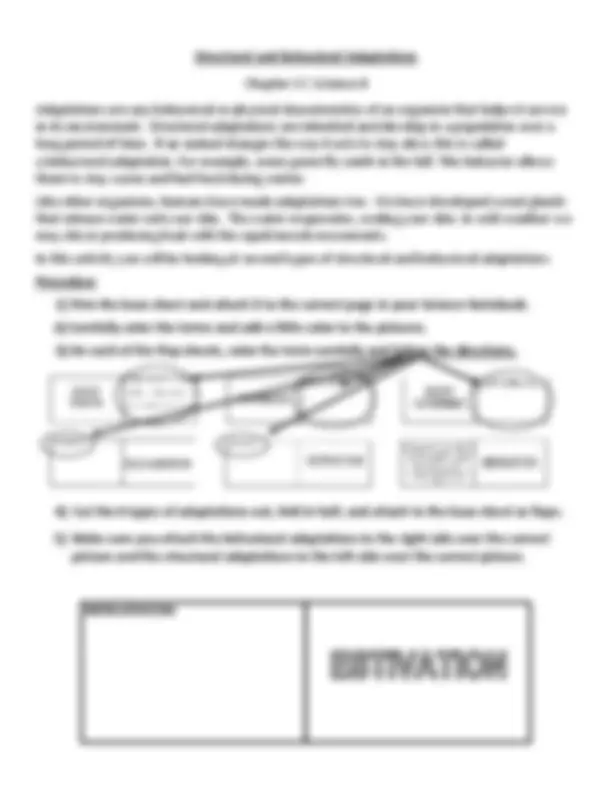



Study with the several resources on Docsity

Earn points by helping other students or get them with a premium plan


Prepare for your exams
Study with the several resources on Docsity

Earn points to download
Earn points by helping other students or get them with a premium plan
Community
Ask the community for help and clear up your study doubts
Discover the best universities in your country according to Docsity users
Free resources
Download our free guides on studying techniques, anxiety management strategies, and thesis advice from Docsity tutors
An introduction to adaptations in animals, focusing on structural and behavioral adaptations. It covers various examples of structural adaptations like webbed feet, sharp claws, and long necks, as well as behavioral adaptations such as migration and hibernation. The document also includes activities for students to engage with the concepts.
Typology: Lecture notes
1 / 3

This page cannot be seen from the preview
Don't miss anything!


A STRUCTURAL ADAPTATION is an inherited body structure. Webbed feet, sharp claws, beak type, wings for flying, feathers, fur, scales, spines, thorns, or types of leaves, can all help organisms survive in an environm e nt. A BEHAVIORAL ADAPTATION is something an animal does or how it acts, and is usually in response to some type of environmental stimulus. These can be instinct or learned behaviors.
Animal migration is the long-distance movement of individuals, usually on a seasonal basis. Migration is found in all major animal groups, including birds, mammals, fish, reptiles, amphibians, and insects. **Many humans migrate to warmer climates during cold Michigan winters **DEFINE HIBERNATION Other than fur, list 3 types of body coverings and what they were adapted for.
List 3 structural adaptations that evolved as defense mechanisms.
Why did the giraffe develop a long neck?? Why did the rabbit develop large ears?? What happens if a species doesn’t adapt??**